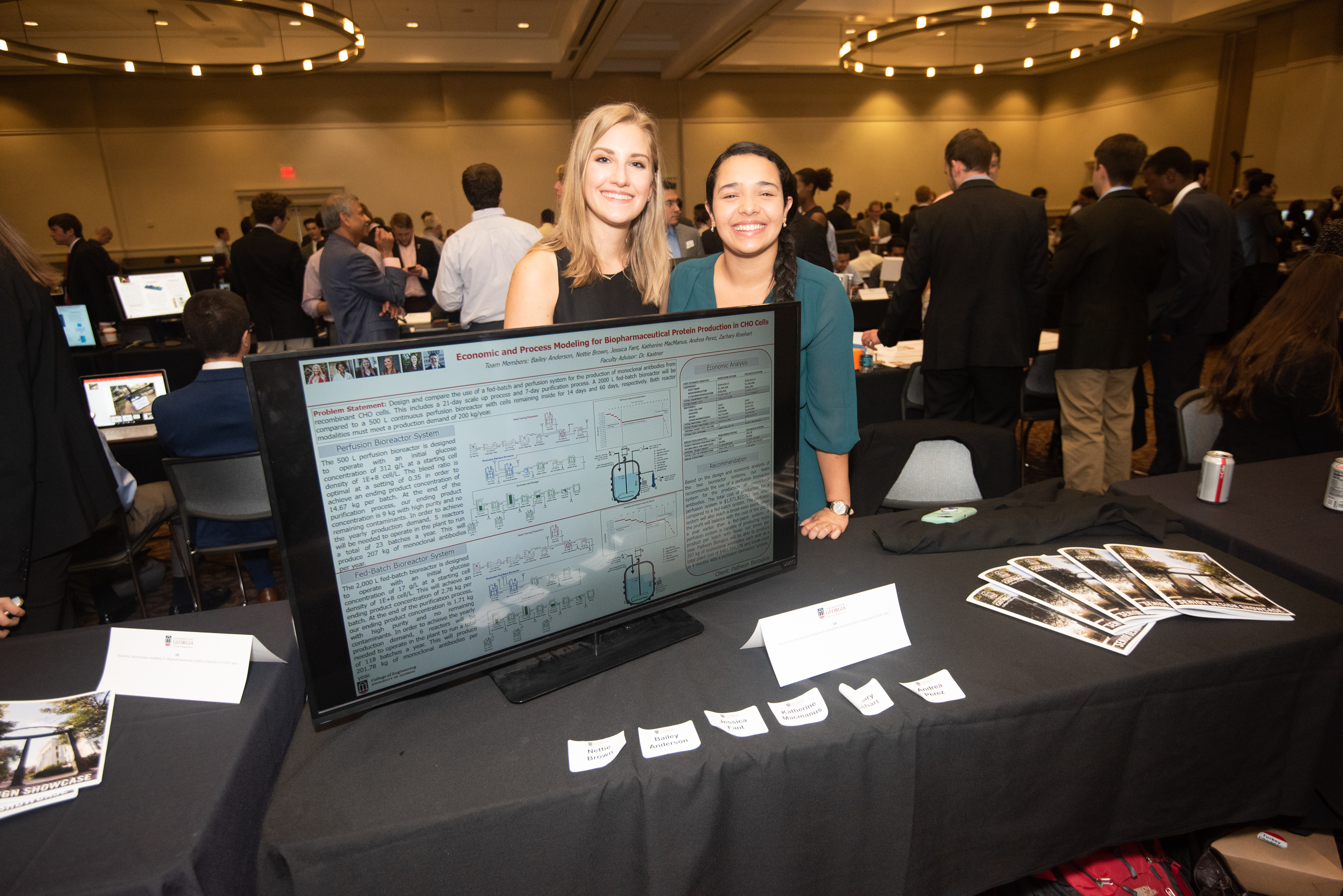The University of Georgia College of Engineering’s annual Senior Design Showcase will feature the creative designs of hundreds of students who’ve worked the past academic year to find solutions to real-world challenges.
This year’s student teams have designed devices to help veterinarians diagnose and treat seizures in dogs, developed software to identify cyber threats, and created plans for infrastructure improvements in communities across Georgia.
The yearlong projects are part of a capstone course that tests seniors on all the engineering concepts and skills they’ve learned and practiced during their undergraduate studies. They will present their projects on April 23 in the Tate Student Center’s Grand Hall. The event is open to the public from 2:30 to 4:30 p.m.
“Our senior design course is an opportunity for students to gain practice and confidence in taking on an engineering challenge from start to finish,” said Donald Leo, dean of the College of Engineering. “These projects test students on all the elements they are going to encounter as a practicing engineer such as breaking down complex problems, applying their engineering skills, and working in teams to find solutions.”
More than 50 companies, government agencies, nonprofits and university affiliates – including Southern Company, Gulfstream Aerospace, Corteva Agriscience, Johnson Controls, Janssen Pharmaceuticals and Rockwell Automation – have partnered with teams to explore new technologies, develop prototypes and get practical assistance with engineering challenges.
Fighting flutter
Flutter is a dangerous phenomenon that can happen when a structure such as an aircraft is subjected to aerodynamic forces. In a worst-case scenario, flutter can lead to structural failure. Working with Gulfstream Aerospace, one senior design team developed a model to simulate flutter conditions on the company’s G650 aircraft and to demonstrate how design changes might reduce the phenomenon.
“We realized the importance of our fluid-structure research and how it could help Gulfstream engineers predict and prevent flutter in future aircraft,” said Jake Jensen, a mechanical engineering student. “It felt great knowing that we were conducting meaningful research and taking on challenges alongside some of the best engineers in the industry.”
Jensen and his team designed a test article using the principles of air-to-water similarity and conducted experiments in the College of Engineering’s massive water tunnel.
“For me the most enjoyable part of the senior design course was working with my awesome team of classmates. We learned to tailor our individual strengths into one coherent unit. Discovering ourselves and building friendships was just as satisfying as seeing our final product come to fruition,” said Jensen, who will begin work as a thermal analyst with Lockheed Martin after graduating in May.
A total of 90 teams involving nearly 500 students produced capstone projects this year, a record for UGA’s engineering college, which has experienced extraordinary growth since its founding in 2012.
Serving the state
Many of this year’s projects have a distinctly Athens flavor. Teams worked with several local companies including Jittery Joe’s Coffee and Terrapin Beer Company. Two separate teams worked with Athens’ Kindercore Vinyl, a record manufacturing and pressing company. The students designed a device to remove the center label section of vinyl records prior to recycling.
Other student teams worked with clients across the state thanks to connections facilitated by the Archway Partnership, a public service and outreach unit.
Teams conducted a feasibility study for the expansion of an elementary school in Hart County, developed a stormwater management plan for a city park in Tennille, redesigned the entryway to THE Southern Crescent Technical College campus near Griffin and performed a remediation analysis on a contaminated property in Hawkinsville.
Dawgs helping dogs
Another group of students developed a device to help veterinarians treat aspiration pneumonia in dogs, which can be fatal if left untreated. The current method of treatment — called coupage — involves a veterinarian cupping their hands and gently but rapidly patting the dog’s chest wall to loosen the buildup of phlegm in the airways. This treatment requires the animal to be removed from a high-oxygen environment, is unstandardized, and commonly results in veterinarians being bitten.
A team of UGA students designed a vibrating coupage vest to address the drawbacks of manual treatment. The vibrating harness, dubbed the Phlegm Fighter, uses motor packs fitted to the dog’s sides to generate vibrations similar to coupage.
“What’s really cool about our capstone program is that most of us work on an interdisciplinary team,” said Hannah Bass, the team lead for the project. “Working with people with different technical backgrounds is an experience and a skill that’s applicable no matter which field you go into.”
In addition to the Phlegm Fighter, students tackled several other challenges for UGA’s College of Veterinary Medicine. One team designed a device that uses an infrared sensor to help veterinarians monitor the heart rate of animals such as birds, rabbits and turtles recovering from procedures that require anesthesia. Other students created a prototype that monitors and logs data on seizures in dogs. The device is designed to provide information that helps veterinarians more accurately gauge medication to control the seizures.
“The capstone senior design course is a perfect example of our commitment to connecting rigorous academics to real-world hands-on engineering experiences,” said Leo. “It’s been exciting to see the showcase get bigger and better each year, both in terms of the number of students and projects involved as well as the quality and sophistication of our students’ work.”


